Junxing Hu
The Primacy of Magnitude in Low-Rank Adaptation
Jul 09, 2025Abstract:Low-Rank Adaptation (LoRA) offers a parameter-efficient paradigm for tuning large models. While recent spectral initialization methods improve convergence and performance over the naive "Noise & Zeros" scheme, their extra computational and storage overhead undermines efficiency. In this paper, we establish update magnitude as the fundamental driver of LoRA performance and propose LoRAM, a magnitude-driven "Basis & Basis" initialization scheme that matches spectral methods without their inefficiencies. Our key contributions are threefold: (i) Magnitude of weight updates determines convergence. We prove low-rank structures intrinsically bound update magnitudes, unifying hyperparameter tuning in learning rate, scaling factor, and initialization as mechanisms to optimize magnitude regulation. (ii) Spectral initialization succeeds via magnitude amplification. We demystify that the presumed knowledge-driven benefit of the spectral component essentially arises from the boost in the weight update magnitude. (iii) A novel and compact initialization strategy, LoRAM, scales deterministic orthogonal bases using pretrained weight magnitudes to simulate spectral gains. Extensive experiments show that LoRAM serves as a strong baseline, retaining the full efficiency of LoRA while matching or outperforming spectral initialization across benchmarks.
JoyAgents-R1: Joint Evolution Dynamics for Versatile Multi-LLM Agents with Reinforcement Learning
Jun 24, 2025Abstract:Multi-agent reinforcement learning (MARL) has emerged as a prominent paradigm for increasingly complex tasks. However, joint evolution across heterogeneous agents remains challenging due to cooperative inefficiency and training instability. In this paper, we propose the joint evolution dynamics for MARL called JoyAgents-R1, which first applies Group Relative Policy Optimization (GRPO) to the joint training of heterogeneous multi-agents. By iteratively refining agents' large language models (LLMs) and memories, the method achieves holistic equilibrium with optimal decision-making and memory capabilities. Specifically, JoyAgents-R1 first implements node-wise Monte Carlo sampling on the behavior of each agent across entire reasoning trajectories to enhance GRPO sampling efficiency while maintaining policy diversity. Then, our marginal benefit-driven selection strategy identifies top-$K$ sampling groups with maximal reward fluctuations, enabling targeted agent model updates that improve training stability and maximize joint benefits through cost-effective parameter adjustments. Meanwhile, JoyAgents-R1 introduces an adaptive memory evolution mechanism that repurposes GRPO rewards as cost-free supervisory signals to eliminate repetitive reasoning and accelerate convergence. Experiments across general and domain-specific scenarios demonstrate that JoyAgents-R1 achieves performance comparable to that of larger LLMs while built on smaller open-source models.
Balanced Representation Learning for Long-tailed Skeleton-based Action Recognition
Aug 27, 2023Abstract:Skeleton-based action recognition has recently made significant progress. However, data imbalance is still a great challenge in real-world scenarios. The performance of current action recognition algorithms declines sharply when training data suffers from heavy class imbalance. The imbalanced data actually degrades the representations learned by these methods and becomes the bottleneck for action recognition. How to learn unbiased representations from imbalanced action data is the key to long-tailed action recognition. In this paper, we propose a novel balanced representation learning method to address the long-tailed problem in action recognition. Firstly, a spatial-temporal action exploration strategy is presented to expand the sample space effectively, generating more valuable samples in a rebalanced manner. Secondly, we design a detached action-aware learning schedule to further mitigate the bias in the representation space. The schedule detaches the representation learning of tail classes from training and proposes an action-aware loss to impose more effective constraints. Additionally, a skip-modal representation is proposed to provide complementary structural information. The proposed method is validated on four skeleton datasets, NTU RGB+D 60, NTU RGB+D 120, NW-UCLA, and Kinetics. It not only achieves consistently large improvement compared to the state-of-the-art (SOTA) methods, but also demonstrates a superior generalization capacity through extensive experiments. Our code is available at https://github.com/firework8/BRL.
Learning Explicit Contact for Implicit Reconstruction of Hand-held Objects from Monocular Images
May 31, 2023Abstract:Reconstructing hand-held objects from monocular RGB images is an appealing yet challenging task. In this task, contacts between hands and objects provide important cues for recovering the 3D geometry of the hand-held objects. Though recent works have employed implicit functions to achieve impressive progress, they ignore formulating contacts in their frameworks, which results in producing less realistic object meshes. In this work, we explore how to model contacts in an explicit way to benefit the implicit reconstruction of hand-held objects. Our method consists of two components: explicit contact prediction and implicit shape reconstruction. In the first part, we propose a new subtask of directly estimating 3D hand-object contacts from a single image. The part-level and vertex-level graph-based transformers are cascaded and jointly learned in a coarse-to-fine manner for more accurate contact probabilities. In the second part, we introduce a novel method to diffuse estimated contact states from the hand mesh surface to nearby 3D space and leverage diffused contact probabilities to construct the implicit neural representation for the manipulated object. Benefiting from estimating the interaction patterns between the hand and the object, our method can reconstruct more realistic object meshes, especially for object parts that are in contact with hands. Extensive experiments on challenging benchmarks show that the proposed method outperforms the current state of the arts by a great margin.
CASIA-Iris-Africa: A Large-scale African Iris Image Database
Feb 25, 2023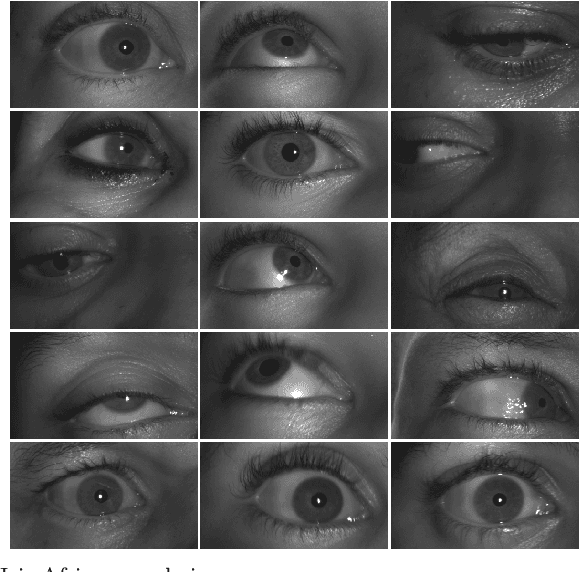
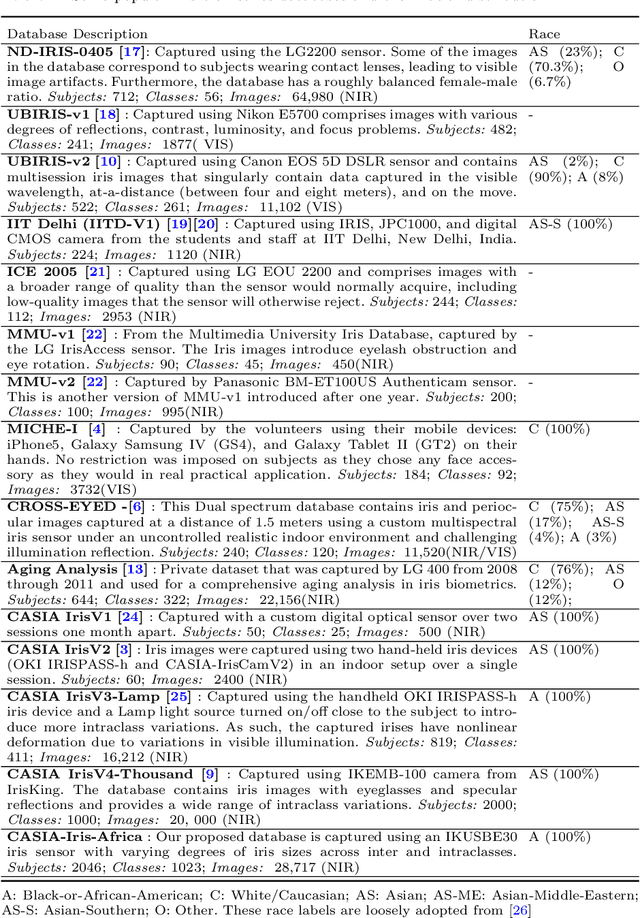
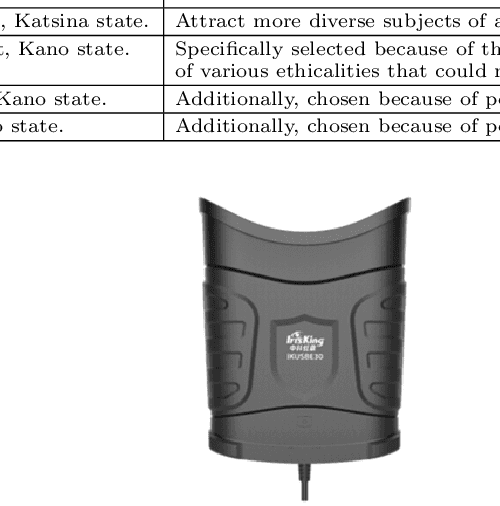
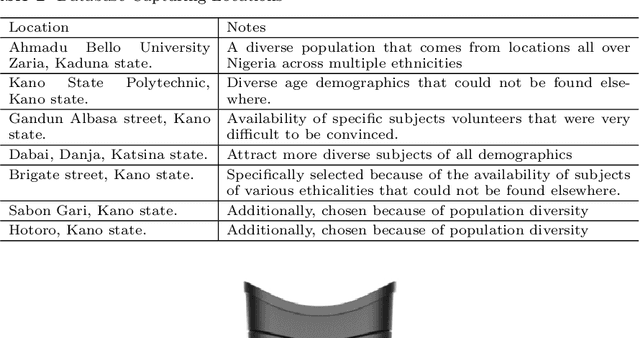
Abstract:Iris biometrics is a phenotypic biometric trait that has proven to be agnostic to human natural physiological changes. Research on iris biometrics has progressed tremendously, partly due to publicly available iris databases. Various databases have been available to researchers that address pressing iris biometric challenges such as constraint, mobile, multispectral, synthetics, long-distance, contact lenses, liveness detection, etc. However, these databases mostly contain subjects of Caucasian and Asian docents with very few Africans. Despite many investigative studies on racial bias in face biometrics, very few studies on iris biometrics have been published, mainly due to the lack of racially diverse large-scale databases containing sufficient iris samples of Africans in the public domain. Furthermore, most of these databases contain a relatively small number of subjects and labelled images. This paper proposes a large-scale African database named CASIA-Iris-Africa that can be used as a complementary database for the iris recognition community to mediate the effect of racial biases on Africans. The database contains 28,717 images of 1023 African subjects (2046 iris classes) with age, gender, and ethnicity attributes that can be useful in demographically sensitive studies of Africans. Sets of specific application protocols are incorporated with the database to ensure the database's variability and scalability. Performance results of some open-source SOTA algorithms on the database are presented, which will serve as baseline performances. The relatively poor performances of the baseline algorithms on the proposed database despite better performance on other databases prove that racial biases exist in these iris recognition algorithms. The database will be made available on our website: http://www.idealtest.org.
A Research and Strategy of Remote Sensing Image Denoising Algorithms
May 24, 2019

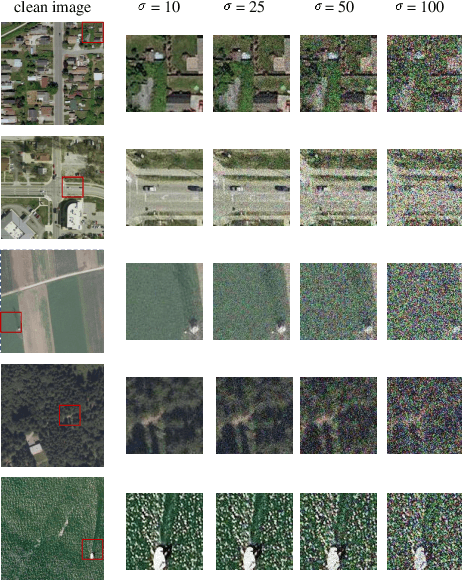
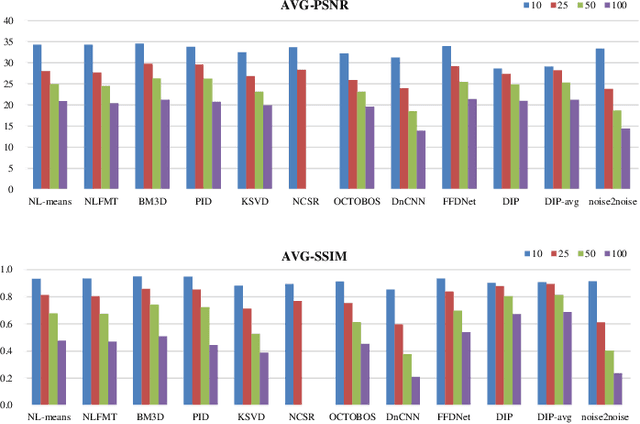
Abstract:Most raw data download from satellites are useless, resulting in transmission waste, one solution is to process data directly on satellites, then only transmit the processed results to the ground. Image processing is the main data processing on satellites, in this paper, we focus on image denoising which is the basic image processing. There are many high-performance denoising approaches at present, however, most of them rely on advanced computing resources or rich images on the ground. Considering the limited computing resources of satellites and the characteristics of remote sensing images, we do some research on these high-performance ground image denoising approaches and compare them in simulation experiments to analyze whether they are suitable for satellites. According to the analysis results, we propose two feasible image denoising strategies for satellites based on satellite TianZhi-1.
A Comparison and Strategy of Semantic Segmentation on Remote Sensing Images
May 24, 2019
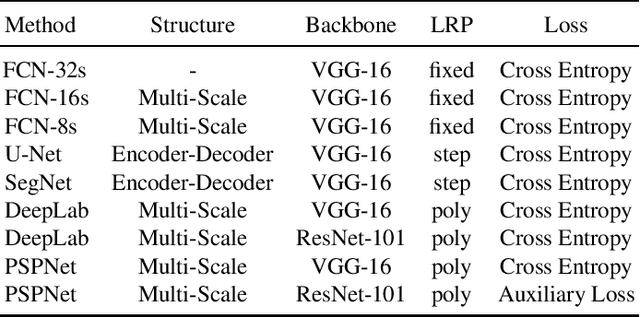


Abstract:In recent years, with the development of aerospace technology, we use more and more images captured by satellites to obtain information. But a large number of useless raw images, limited data storage resource and poor transmission capability on satellites hinder our use of valuable images. Therefore, it is necessary to deploy an on-orbit semantic segmentation model to filter out useless images before data transmission. In this paper, we present a detailed comparison on the recent deep learning models. Considering the computing environment of satellites, we compare methods from accuracy, parameters and resource consumption on the same public dataset. And we also analyze the relation between them. Based on experimental results, we further propose a viable on-orbit semantic segmentation strategy. It will be deployed on the TianZhi-2 satellite which supports deep learning methods and will be lunched soon.
 Add to Chrome
Add to Chrome Add to Firefox
Add to Firefox Add to Edge
Add to Edge